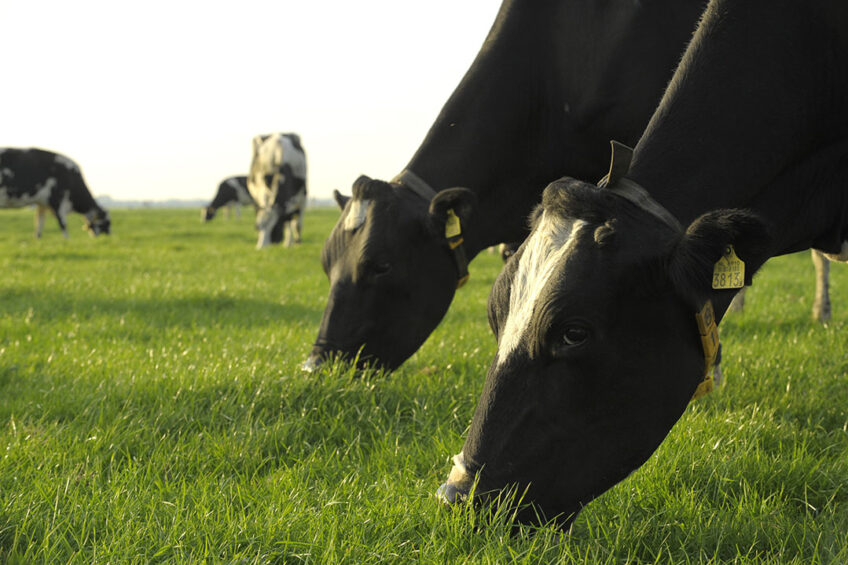Is there a way to manage ticks more effectively in cows?

Recent research study shows that breeding strong tick resistance into all cattle breeds is feasible. That means that ticks in dairy cows can be much more effectively managed, or even eradicated in some countries.
Researchers from Australia, Brazil, Scotland and South Africa contributed to the multi-breed analysis. The study concludes that genomic breeding values can be estimated across a wide range of unrelated cattle breeds and used to improve tick resistance.
Ticks cost the Australian cattle industry – including the dairy industry – more than AUS $ 175 million a year. About 80% of the world’s cattle are at risk of tick-borne diseases. The economic loss from cattle ticks worldwide is estimated to be US $ 22 to $ 30 billion per year.

In Australia, and globally, the range of cattle ticks is expanding as the planet warms. As a result, the range is shrinking for cattle breeds with low tick resistance. “We have a tick line in northern Australia, that is in effect a quarantine line,” Dr Heather Burrow of the University of New England in Armidale explains. “That keeps the ticks out of the southern part of Australia.”
The expanding range of ticks is worrying for Australian farmers. “It will be more and more difficult to keep the ticks out of that southern part of the country,” Dr Burrow says. “And in other countries in Africa and Asia, we see that the tick species that causes all the damage, is actually displacing other more benign species of ticks. That is even of greater concern.”
Proof of concept
The fact that breeding strong tick resistance into all cattle breeds is feasible, can bring some light to the situation. “The biggest hurdle that we now have to overcome, is to find a simple and cost-effective way of identifying the cattle that are resistant to ticks or susceptible for breeding, so they can be culled from the herd,” Dr Burrow says.
So far, the research has been funded with a relatively small amount of money, Dr Burrow clarifies. “Primarily to get a proof of concept. The first part of that was making sure that we can come up with a blood test or a skin hyper sensitivity test with a same day result. We still have to do that research but we are confident we can do that.”
The second part of the proof of concept was proving that genetic improvement was possible, across countries and with smaller numbers of animals, Dr Burrow explains. “In dairy there is the advantage that the cattle are largely related. But that is not the case in beef cattle. The real positive of our genomic selection paper is that we were able to use relatively small numbers of unrelated cattle to get good predictions. We were pretty excited about that because it means that we can get a same day cost effective measure of tick resistance across countries and can just combine the data.”
This would happen in conjunction with existing breeding programs and breeding objectives, Dr Burrow emphasises. “In dairy the objectives now would be milk production, fat content and all the other traits that are important to dairy producers. We would be adding in tick resistance as an additional component.”
Tests to manage the herd
Researchers are now working with the Gates Foundation and other funding agencies to get enough funding to go forward. “We are looking for a co-investment model,” Dr Burrow says. “That will allow us to test these simple measures for tick resistance. After that we can just put these tests out there with all the other measures that dairy breeders are using. Dairy breeders could also use these tests to manage their herd. To identify susceptible animals for example.”
For a long time a solution for the tick problem in cattle seemed hard to find. “There was an enormous amount of work that went into tick resistance, particularly done by CSIRO in northern Australia up to the 1990’s,” Dr Burrow says. “But there were no obvious solutions, other than getting the cattle in that had already acquired tick resistance. Looking for a solution was largely forgotten until we thought that genomic technology might allow a breakthrough.”

Genetic assessment has long relied on having cattle populations that were genetically linked and carried records documenting those linkages. Genomic technology has allowed researchers to take low density DNA markers and impute these up to the full genome sequence. “This has allowed us to provide a linkage to the different breeds of cattle across countries, Dr Burrow points out. “That was the huge breakthrough for us.”
A team from CSIRO in Brisbane had earlier done some work in dairy cattle on the Atherton Tablelands in northern Australia. Dr Burrow: “They had established that there is variation in tick resistance. And it is possible to select and improve tick resistance in dairy cattle and in different breeds of cattle. But what we really need for producers, is a simple way of identifying the different degrees of resistance or susceptibility. So they can make that genetic improvement.”
Dairy producers proving the model
Getting a simple test would immediately enable dairy producers to use this in their breeding programs, Dr Burrow expects. “Then it is just a matter of dairy producers proving the model. It could be implemented within five years in some countries. A lot of producers in several countries would put tick resistance in there very quickly. In India and Pakistan for example. It might take a bit longer in some developing countries, because they are still establishing their breeding programs.”
In Australia ticks could even be eradicated in cattle, Dr Burrow says. “Because we already have a long track record of keeping the cattle tick out of southern Australia. If you could identify the cattle that are resistant, and start breeding to improve, it would be relatively easy to start moving our quarantine tick line north. If you move it further and further north and east, you would have a smaller and smaller line and eventually possibly no ticks.”
Australia has a unique ability to take on a breeding project because it does not have wildlife that harbours ticks, as is the case in most other countries. “We are in an absolute great position,” Dr Burrow says. “Also, because we are an island. In the US there is a lot of investment in tick vaccines because there is the threat of ticks coming over from deer in Mexico. A vaccine would give producers a treatment. In Australia we could also take advantage of vaccines.”
The study was led by Brazilian researcher Dr Fernando Cardoso of the Brazilian Agricultural Corporation at Bagé and involved scientists from the Roslin Institute in Scotland, UNISA and ARC in South Africa, the University of Queensland, CSIRO, and the University of New England in Australia.
Join 13,000+ subscribers
Subscribe to our newsletter to stay updated about all the need-to-know content in the dairy sector, two times a week.










